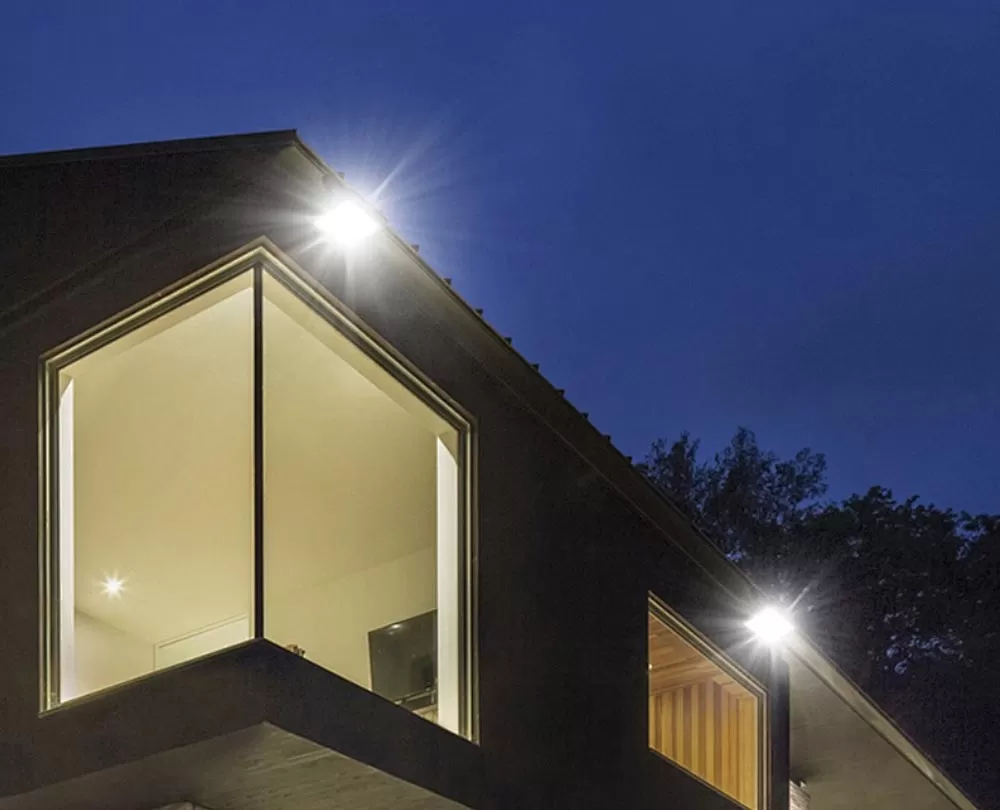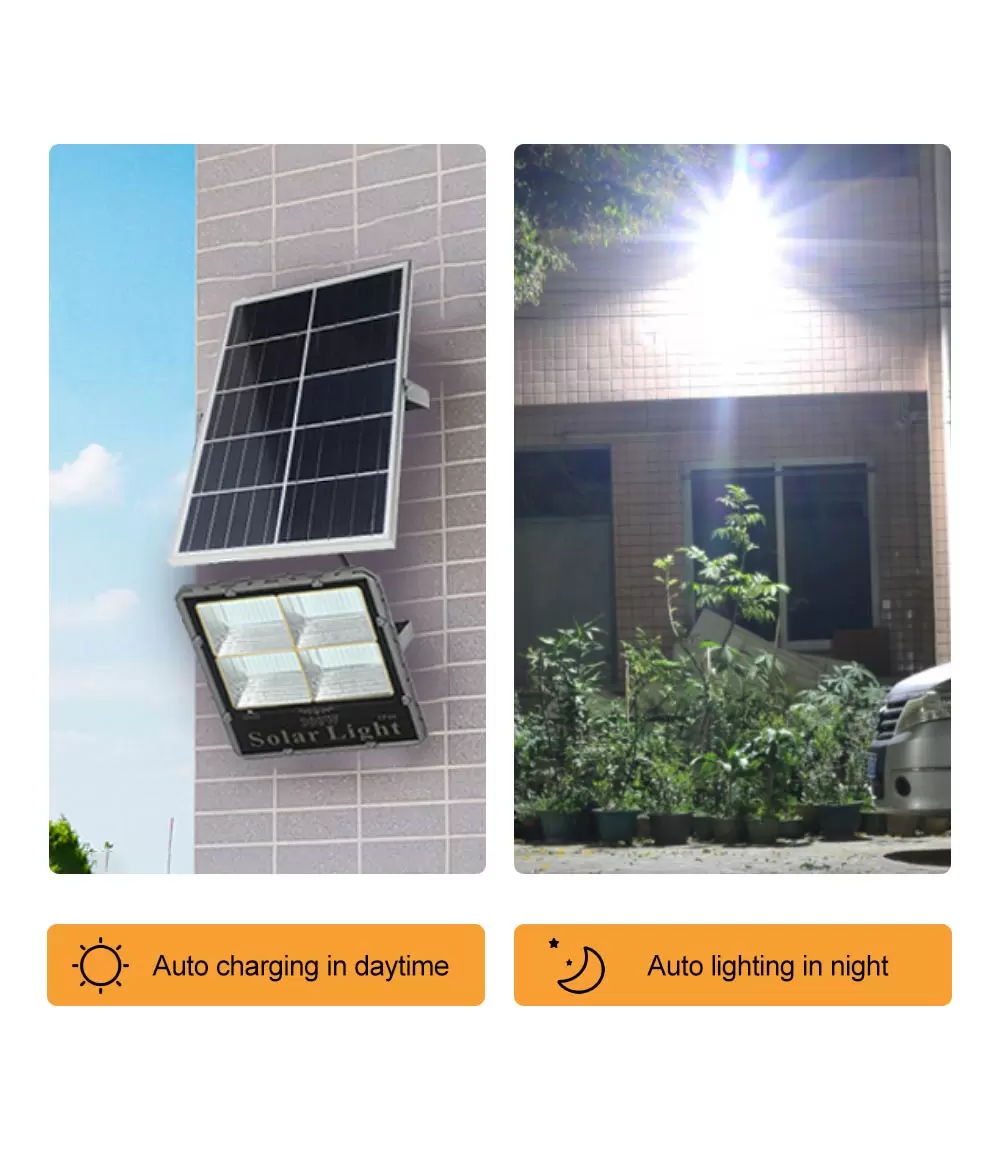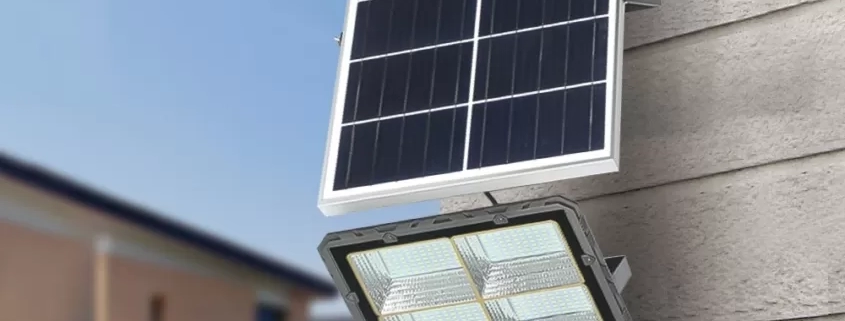Why are homeowners in North America switching to solar flood light?
Rising energy costs, increased environmental awareness, and advances in solar technology have made solar flood light the preferred outdoor lighting solution for North American homeowners. This makes them a sustainable alternative to traditional grid-powered systems. After switching to solar flood lights, many users have reduced their annual outdoor lighting bills by hundreds of dollars. Another reason for the growing popularity of solar flood lights is their versatility. They are very easy to install and can be installed in remote areas without grid power, such as gardens, driveways, or barns. According to the U.S. Department of Energy, residential solar installations grew by 34% in 2023, and more and more homeowners are installing solar flood lights.
Disadvantages of Traditional LED Flood lights
Before adopting solar flood lights, many homeowners relied on traditional LED FLood lights. Although LEDs are more energy-efficient than incandescent lamps, they still have significant limitations. They are more dependent on the grid and require wiring and power supply, which limits installation options. They are also more expensive to operate, which can lead to higher electricity bills, especially for all-night security lighting. At the same time, they are also affected by power outages and are prone to failure, plunging the house into darkness. Another disadvantage of traditional LED flood lights is their impact on the environment. Although energy-efficient, they still rely on electricity generated from fossil fuels, contributing to greenhouse gas emissions. On the other hand, solar floodlights utilize renewable energy, making them a more environmentally friendly choice for environmentally conscious homeowners.

Solar Flood Light Reduce Home Expenses
Solar flood light reduce costs in two ways: zero electricity bills and minimal maintenance. Unlike traditional LEDs, solar flood lights harness sunlight and convert it into free energy. They do not require large areas of wiring, which can reduce trenching, conduit, or electrician costs. High-brightness LED lamp beads and polycrystalline silicon solar panels power solar floodlights. At the same time, they have a service life of 5-7 years and a payback period as short as 2 years, which is more durable than traditional LED lights. In addition to direct savings, solar flood lights can also reduce indirect costs. For example, their durability means fewer replacements and low maintenance requirements, saving time and energy. A homeowner in Florida saved thousands of dollars in electricity bills in three years after adopting solar flood lights. There are no monthly electricity bills to pay, and lithium-ion batteries are durable, providing predictable long-term savings.
Environmental Impact of Solar Flood light
Solar flood light is consistent with North America’s push for sustainable development. Traditional LEDs, while efficient, still rely on fossil fuels for electricity. In contrast, solar flood lights are a great way to reduce carbon emissions, with one solar flood light offsetting 100 pounds of CO2 annually. In addition, many models in BARANA feature recyclable aluminum and lithium-ion batteries. Models with automatic light sensors minimize unnecessary lighting. The environmental benefits of solar floodlights are not limited to reducing emissions. By using renewable energy, they help conserve natural resources and reduce dependence on non-renewable energy sources. This makes them a key component for homeowners in North America in their pursuit of sustainable living.

Ability to address the shortcomings of traditional solar technology
Early solar lighting systems were criticized for weak brightness and unstable performance. BARANA’s solar flood lights overcome these issues through advances such as high-efficiency polycrystalline silicon solar cell panels and adaptive brightness settings. A series of case studies show that solar flood lights with motion detection reduce false triggering of wildlife while providing instant lighting for safety. Improved battery technology also ensures stable performance even in cloudy climates. In addition, the solar floodlights offered by BARANA are designed with user-friendly features, such as adjustable panels and remote controls on demand, allowing homeowners to optimize performance according to their specific needs.

Enhanced Security and Convenience
Solar flood lights improve home security more effectively than traditional LEDs. Features such as adaptive brightness and all-night operation can save energy while deterring intruders. Adaptive brightness adjustment brought by automatic light sensors automatically adjusts the brightness according to the surrounding brightness conditions, reducing unnecessary consumption. In addition, settings can be adjusted through a smartphone app even when you are not home. More durable in some areas with extreme weather, they can cool down faster to avoid heating and other situations. The convenience of solar floodlights is another significant advantage. The wireless design allows for flexible placement, and their automatic operation means that homeowners don’t have to worry about turning them on or off. The combination of security and ease of use makes solar floodlights a practical choice for modern homes.
Bringing more environmentally friendly outdoor lighting
North American homeowners use solar flood lights to save costs, protect the environment, and improve safety. These lights offer a practical outdoor lighting solution by eliminating reliance on the grid and reducing maintenance hassles. As technology advances, solar flood lights will continue outperforming traditional LEDs, allowing homeowners to illuminate their homes sustainably and smartly.


